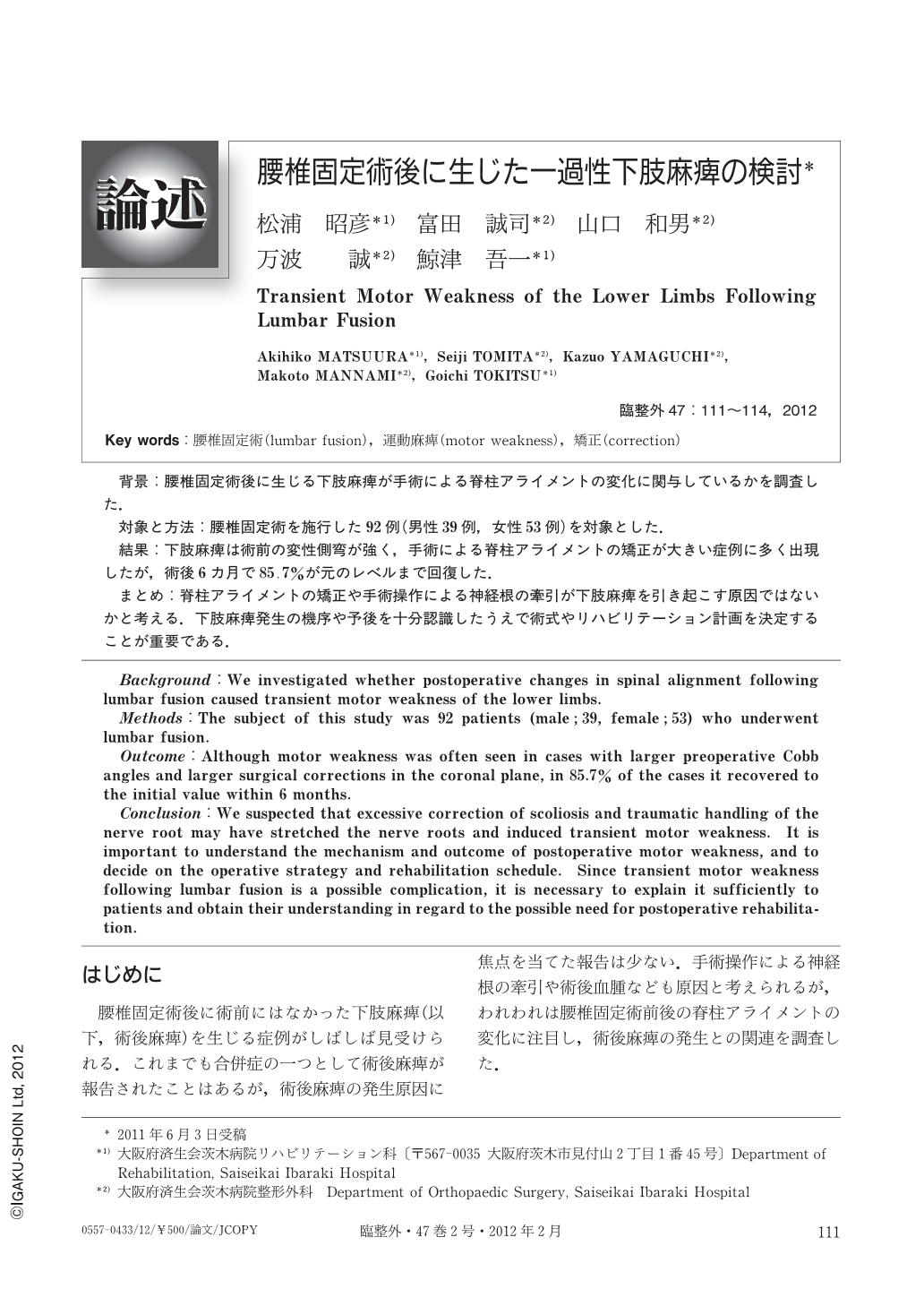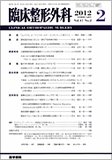Japanese
English
- 有料閲覧
- Abstract 文献概要
- 1ページ目 Look Inside
- 参考文献 Reference
背景:腰椎固定術後に生じる下肢麻痺が手術による脊柱アライメントの変化に関与しているかを調査した.
対象と方法:腰椎固定術を施行した92例(男性39例,女性53例)を対象とした.
結果:下肢麻痺は術前の変性側弯が強く,手術による脊柱アライメントの矯正が大きい症例に多く出現したが,術後6カ月で85.7%が元のレベルまで回復した.
まとめ:脊柱アライメントの矯正や手術操作による神経根の牽引が下肢麻痺を引き起こす原因ではないかと考える.下肢麻痺発生の機序や予後を十分認識したうえで術式やリハビリテーション計画を決定することが重要である.
Background:We investigated whether postoperative changes in spinal alignment following lumbar fusion caused transient motor weakness of the lower limbs.
Methods:The subject of this study was 92 patients (male;39, female;53) who underwent lumbar fusion.
Outcome:Although motor weakness was often seen in cases with larger preoperative Cobb angles and larger surgical corrections in the coronal plane, in 85.7% of the cases it recovered to the initial value within 6 months.
Conclusion:We suspected that excessive correction of scoliosis and traumatic handling of the nerve root may have stretched the nerve roots and induced transient motor weakness. It is important to understand the mechanism and outcome of postoperative motor weakness, and to decide on the operative strategy and rehabilitation schedule. Since transient motor weakness following lumbar fusion is a possible complication, it is necessary to explain it sufficiently to patients and obtain their understanding in regard to the possible need for postoperative rehabilitation.

Copyright © 2012, Igaku-Shoin Ltd. All rights reserved.


